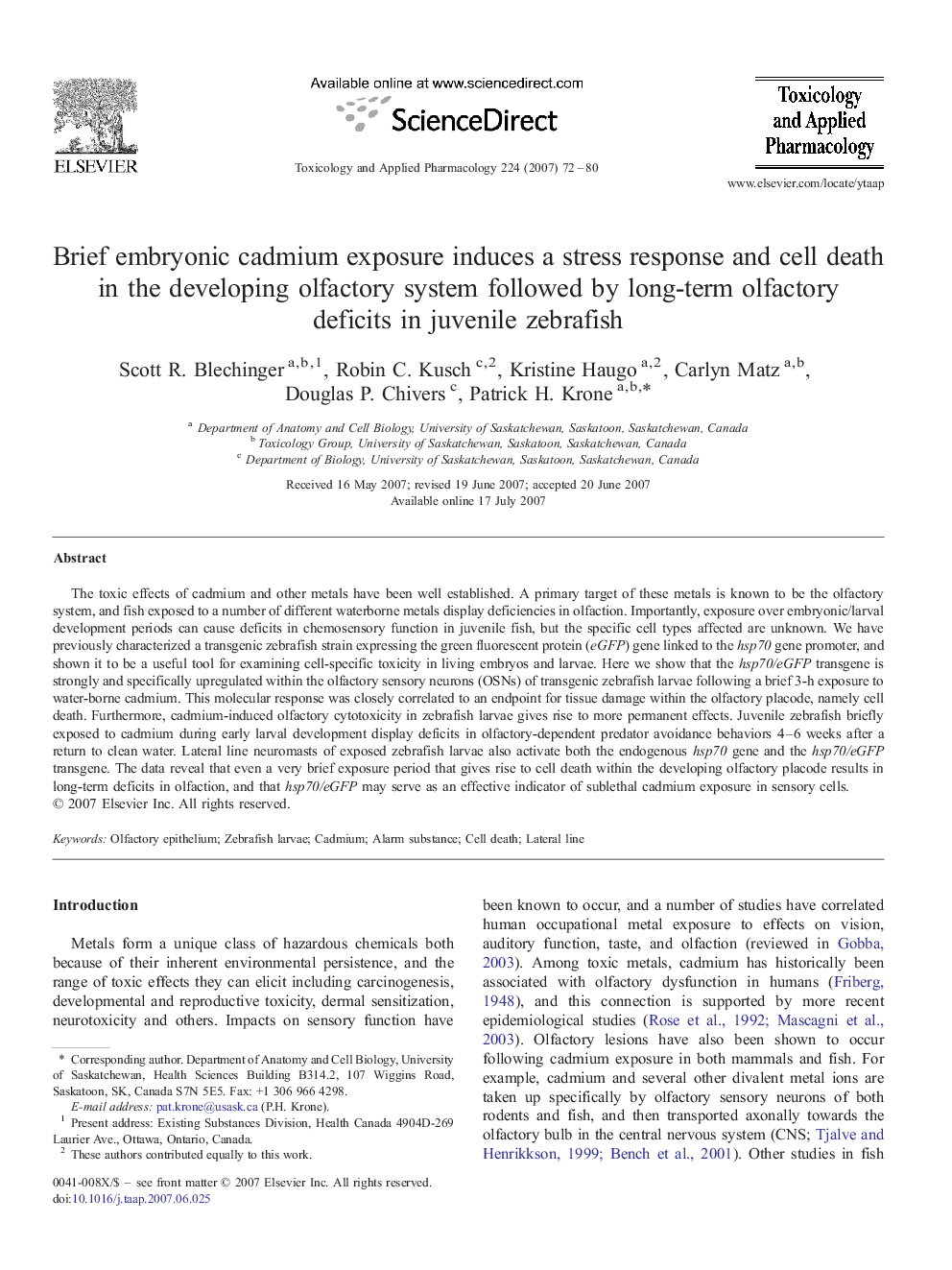| کد مقاله | کد نشریه | سال انتشار | مقاله انگلیسی | نسخه تمام متن |
|---|---|---|---|---|
| 2571747 | 1128649 | 2007 | 9 صفحه PDF | دانلود رایگان |

The toxic effects of cadmium and other metals have been well established. A primary target of these metals is known to be the olfactory system, and fish exposed to a number of different waterborne metals display deficiencies in olfaction. Importantly, exposure over embryonic/larval development periods can cause deficits in chemosensory function in juvenile fish, but the specific cell types affected are unknown. We have previously characterized a transgenic zebrafish strain expressing the green fluorescent protein (eGFP) gene linked to the hsp70 gene promoter, and shown it to be a useful tool for examining cell-specific toxicity in living embryos and larvae. Here we show that the hsp70/eGFP transgene is strongly and specifically upregulated within the olfactory sensory neurons (OSNs) of transgenic zebrafish larvae following a brief 3-h exposure to water-borne cadmium. This molecular response was closely correlated to an endpoint for tissue damage within the olfactory placode, namely cell death. Furthermore, cadmium-induced olfactory cytotoxicity in zebrafish larvae gives rise to more permanent effects. Juvenile zebrafish briefly exposed to cadmium during early larval development display deficits in olfactory-dependent predator avoidance behaviors 4–6 weeks after a return to clean water. Lateral line neuromasts of exposed zebrafish larvae also activate both the endogenous hsp70 gene and the hsp70/eGFP transgene. The data reveal that even a very brief exposure period that gives rise to cell death within the developing olfactory placode results in long-term deficits in olfaction, and that hsp70/eGFP may serve as an effective indicator of sublethal cadmium exposure in sensory cells.
Journal: Toxicology and Applied Pharmacology - Volume 224, Issue 1, 1 October 2007, Pages 72–80